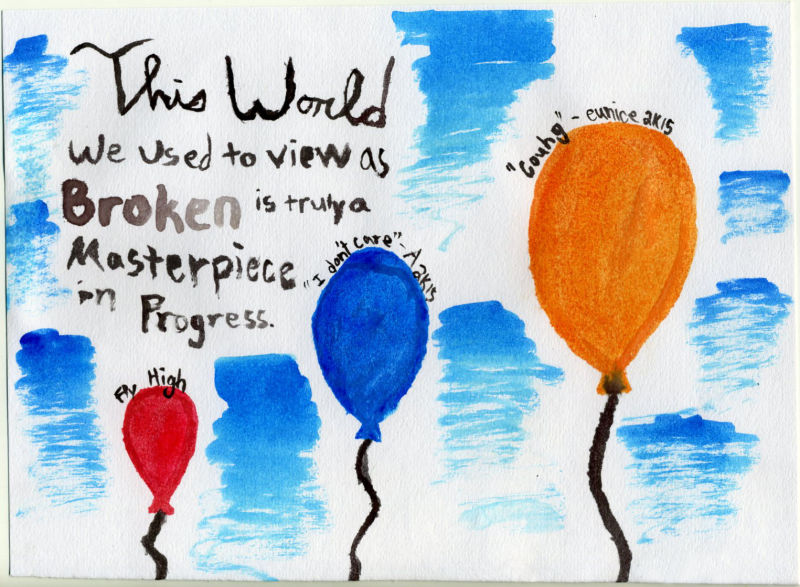From the beginning of the school year, I weave Integrated Learning and Studio Thinking into my lessons as means to develop connectivity, literacy and empathy as well.
Sometimes my art class (this year I teach mostly Art 1 and a section of Digital Imaging) looks like a conventional art room with traditional media and genres, such as watercolor landscapes, contour line still lifes, value drawings, charcoal portraits, collage, digital photography, etc. There are time, however, where we deviate and disrupt.
In the course of this Fall Semester, I implemented some strategies that required students to make connections verbally, visually and associatively, such as Illustrated Quotes and Concept Maps . Realizing the importance of grounding classroom art projects in real-world contemporary studio practice, we looked at the work of artists from KQED’s Art School, such as Wendy MacNaughton’s Illustrated Documentaries and Chris Johanson’s Venn Diagrams as introductions.
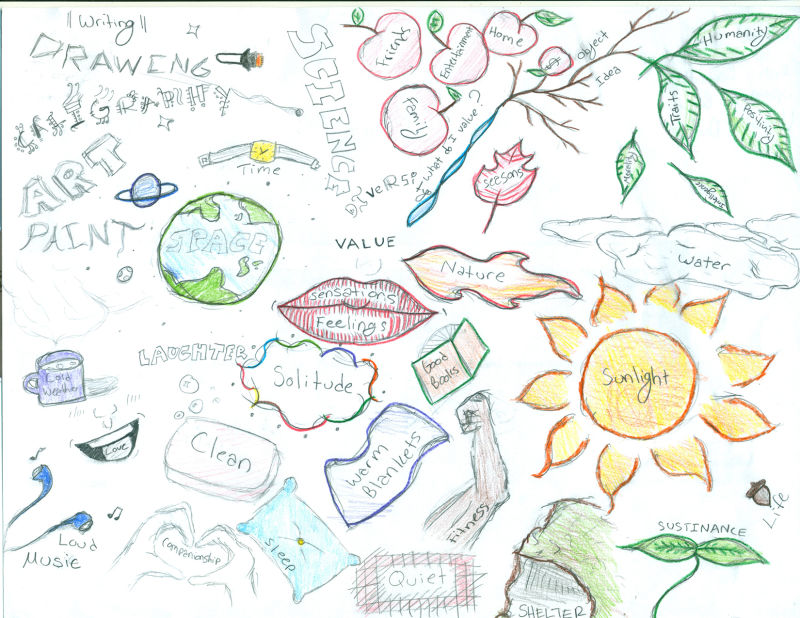
In their book, “Art-Centered Learning Across the Curriculum”, Julia Marshall and David Donahue emphasize the importance of teaching not just about, but through the work of contemporary artists- “contemporary art does not necessarily require technical expertise; learners can engage in making real art and real thinking whether they are proficient in traditional art skills or not” (p.4). It is, therefore a great way to get the creative juices flowing in an Artroom with fewer inhibitions and can be an equalizer among peers.
Illustrated Quotes
Recently I gave students a “special assignment” in the vein of Wendy MacNaughton’s Illustrated Documentaries, using their accordion book process art journals (to be addressed in more detail in a later blog entry) to gather quotes from throughout their day. They were to be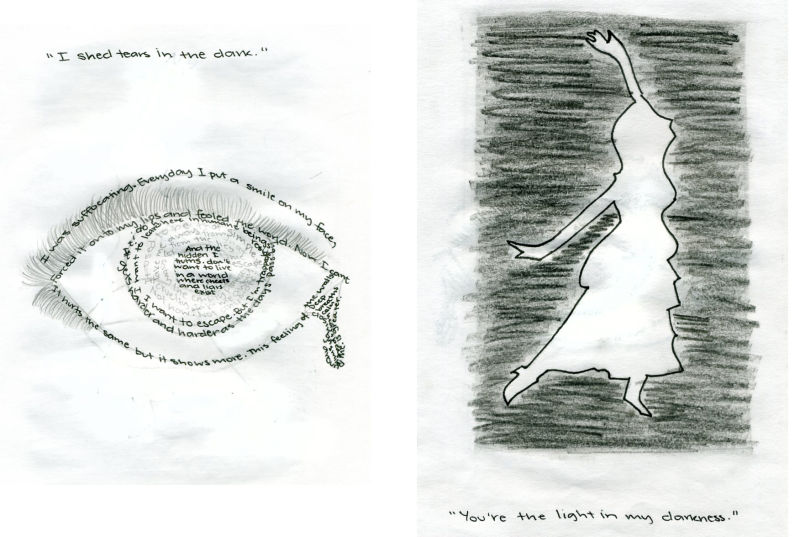 alert to passages in books, song lyrics, conversation with peers – even quotes from other teachers – that provoked, inspired, or moved them in some way. I especially encouraged them to bring in something they were reading or learning in another class. They then selected two that resonated with each other (contradiction and contrast, analogous or synonymous, complementary). From these they created visuals that incorporated the text they chose. For these “Illustrated Quotes” they could use whatever media they wished. We had by this point worked in watercolor, charcoal, collage and even some photoshop. Any and all languages were acceptable – with the exception of hate speech or profanity – and some submitted bilingual illustrated quotes. This process, as well as the concept map experience described below, are examples of Julia Marshall’s notion of “Artistic thinking”… which is largely an amalgam of logical reasoning and associative thinking.” (p.3)
alert to passages in books, song lyrics, conversation with peers – even quotes from other teachers – that provoked, inspired, or moved them in some way. I especially encouraged them to bring in something they were reading or learning in another class. They then selected two that resonated with each other (contradiction and contrast, analogous or synonymous, complementary). From these they created visuals that incorporated the text they chose. For these “Illustrated Quotes” they could use whatever media they wished. We had by this point worked in watercolor, charcoal, collage and even some photoshop. Any and all languages were acceptable – with the exception of hate speech or profanity – and some submitted bilingual illustrated quotes. This process, as well as the concept map experience described below, are examples of Julia Marshall’s notion of “Artistic thinking”… which is largely an amalgam of logical reasoning and associative thinking.” (p.3)
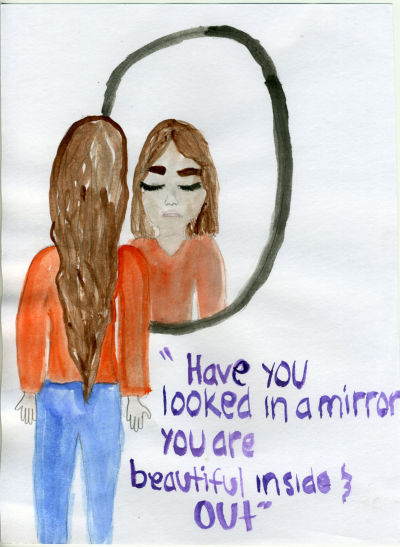
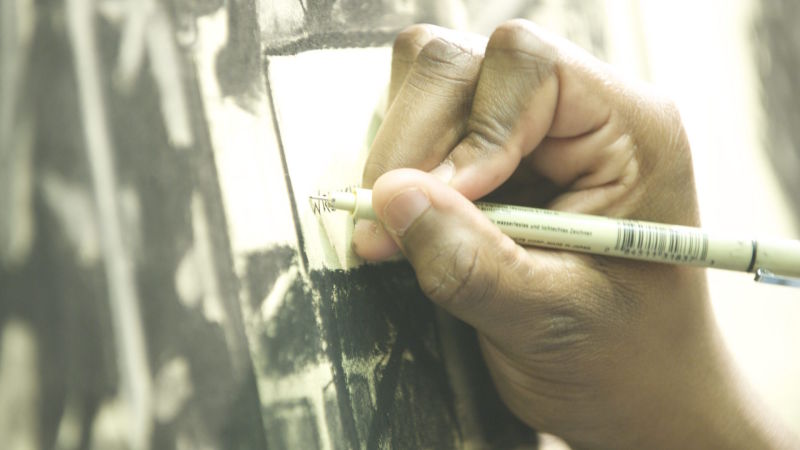

 alert to passages in books, song lyrics, conversation with peers – even quotes from other teachers – that provoked, inspired, or moved them in some way. I especially encouraged them to bring in something they were reading or learning in another class. They then selected two that resonated with each other (contradiction and contrast, analogous or synonymous, complementary). From these they created visuals that incorporated the text they chose. For these “Illustrated Quotes” they could use whatever media they wished. We had by this point worked in watercolor, charcoal, collage and even some photoshop. Any and all languages were acceptable – with the exception of hate speech or profanity – and some submitted bilingual illustrated quotes. This process, as well as the concept map experience described below, are examples of Julia Marshall’s notion of “Artistic thinking”…
alert to passages in books, song lyrics, conversation with peers – even quotes from other teachers – that provoked, inspired, or moved them in some way. I especially encouraged them to bring in something they were reading or learning in another class. They then selected two that resonated with each other (contradiction and contrast, analogous or synonymous, complementary). From these they created visuals that incorporated the text they chose. For these “Illustrated Quotes” they could use whatever media they wished. We had by this point worked in watercolor, charcoal, collage and even some photoshop. Any and all languages were acceptable – with the exception of hate speech or profanity – and some submitted bilingual illustrated quotes. This process, as well as the concept map experience described below, are examples of Julia Marshall’s notion of “Artistic thinking”…
